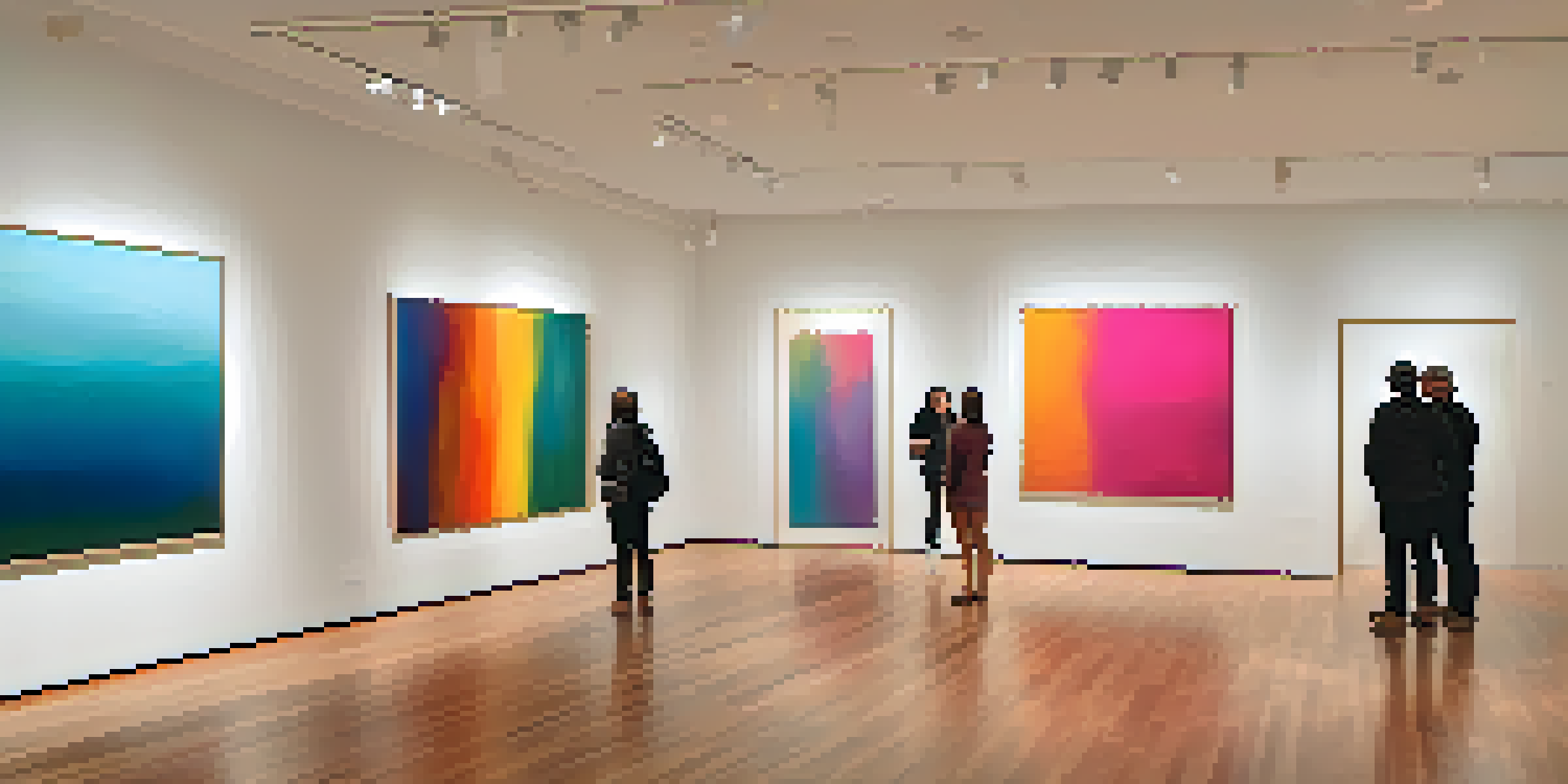Understanding Art Valuation: Factors Affecting Prices

Defining Art Valuation: What Does It Mean?
Art valuation refers to the process of determining the worth of a piece of art. This value can fluctuate based on various factors, including market demand, artist recognition, and condition of the artwork itself. Understanding how valuation works is essential for collectors, investors, and artists alike.
Art is not what you see, but what you make others see.
Just like valuing a car or a house, art valuation can be complex. It’s not just about the aesthetic appeal; it involves market trends and personal factors that can change over time. For instance, a painting may be worth millions one year and significantly less a few years later, depending on the artist's career trajectory.
In essence, art valuation is a blend of objective data and subjective interpretation, making it a unique field. Whether you're buying, selling, or simply enjoying art, knowing how valuations are derived can empower you in the art world.
The Artist's Reputation: A Key Influence
One of the most significant factors affecting art prices is the reputation of the artist. Established artists with a proven track record often command higher prices than emerging talent. For example, works by well-known artists like Picasso or Van Gogh can fetch millions, while a lesser-known artist might struggle to make a sale.

The artist's biography and their presence in the art market can also play a crucial role. If an artist has been featured in major galleries or art fairs, their work is likely to be viewed as more valuable. Collectors often gravitate towards artists with a strong narrative or unique style that resonates with them.
Art Value Depends on Artist's Fame
The reputation of an artist significantly influences the pricing of their artwork, with established names commanding higher prices than emerging talents.
Moreover, an artist's recognition can be affected by external factors, such as critical acclaim or auction results. As the artist's reputation grows, so too does the perceived value of their work, creating a cycle where demand continues to rise.
Provenance: The Art of Ownership History
Provenance, or the history of ownership of a piece of art, is another critical factor in valuation. A well-documented provenance can significantly increase an artwork's value, as it adds authenticity and interest to the piece. For instance, a painting once owned by a famous collector may be worth more than a similar piece without such a history.
The value of an artwork is not just in its market price, but in its ability to resonate with the viewer and society.
Collectors and investors often seek artworks with clear provenance, as this can assure them of the piece's legitimacy. If the ownership history is murky or unverified, potential buyers may be hesitant to invest. Thus, maintaining a clear record of ownership can be beneficial for artists and collectors alike.
In the same way a classic car's history can affect its value, so too can an artwork's provenance. This makes it essential for both buyers and sellers to research and document ownership history as part of the valuation process.
Market Trends: The Role of Supply and Demand
Just like any other commodity, the art market is driven by supply and demand. When demand outstrips supply for a particular artist or style, prices tend to rise. Conversely, if there’s an oversupply of similar artworks, prices may drop. This cyclical nature can make art valuation unpredictable.
Market trends can be influenced by various factors, including cultural shifts, economic conditions, and even social media. For example, an artist who gains popularity through viral social media posts may see their prices increase as collectors rush to buy their work. This highlights the importance of staying informed about current trends.
Provenance Boosts Art's Worth
A well-documented history of ownership can enhance an artwork's value by adding authenticity and interest.
Understanding market dynamics is crucial for anyone involved in art, whether as a collector, investor, or artist. By keeping an eye on market trends, individuals can make informed decisions that align with the current landscape.
Condition and Quality: The Physical State of Art
The condition of a piece of art significantly impacts its valuation. An artwork that is well-preserved and in excellent condition will generally fetch a higher price than one that shows signs of wear and tear. For instance, a painting with fading colors or damaged frames may be valued much lower.
Quality also encompasses the craftsmanship and materials used in creating the artwork. A piece made with high-quality materials and superior techniques is more likely to be valued higher than one that uses inferior materials. This is similar to how the quality of ingredients can affect the price of a gourmet meal.
Thus, both condition and quality serve as key indicators of an artwork's value. For collectors, understanding how these factors work can be essential when evaluating potential purchases.
Cultural Significance: Art's Impact on Society
An artwork's cultural significance can have a profound effect on its valuation. Pieces that resonate with social movements or historical events often carry a greater weight in the art world. For example, works that highlight pressing social issues may attract higher prices due to their relevance and impact.
Art that reflects a specific cultural moment or tradition can also hold more value. Collectors may be drawn to pieces that celebrate their heritage or convey a shared experience. This emotional connection can drive demand and, consequently, prices.
Market Trends Affect Prices
The art market operates on supply and demand dynamics, where changing trends can lead to fluctuating prices for artists and styles.
In this way, art serves as a mirror to society, capturing moments that matter. As such, the cultural significance of a piece can greatly influence its worth, making it essential for collectors to consider this aspect when valuing art.
The Role of Auctions and Galleries in Pricing
Auctions and galleries play a pivotal role in setting art prices. Auction houses often have a significant influence on market values through their pricing strategies and promotional efforts. When a piece sells for a high price at auction, it can create a ripple effect, raising the perceived value of similar works.
Galleries also contribute to art valuation by curating exhibitions and representing artists. The way art is presented can enhance its desirability and perceived value. For instance, an artist showcased in a prestigious gallery may see their prices rise simply due to the gallery's reputation.

Thus, both auctions and galleries serve as key players in the art market, shaping how prices are determined. Understanding their influence can be beneficial for artists, collectors, and investors aiming to navigate the competitive art landscape.